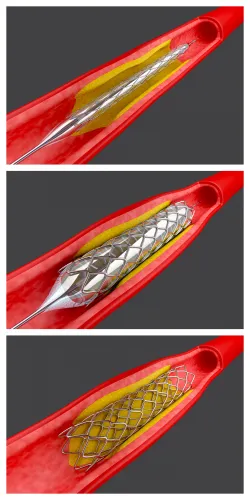Conquer Transforaminal Injections, Paravertebral Blocks With This Guide
Use this CPT® Assistant article as your guiding reference. If the process of coding pain management techniques involving the spine is leaving you in your own world of hurt, you’re not alone. Discerning between the varying code sets of spinal injection services is a process that can only be mastered with time and experience. “Detailed provider documentation is also key to successful spinal injection coding, so clinical documentation improvement [CDI] efforts may need to be employed,” states Sarah L. Goodman, MBA, CHCAF, COC, CCP, FCS, president and CEO of SLG, Inc. Consulting in Raleigh, North Carolina. Fortunately, we’re here to kickstart the process by getting you acclimated to each nuanced code set. As you’ll see, to master the art of spinal injection coding, there are four sets of CPT® codes with which you have to be intimately familiar. Keep reading for a detailed breakdown of two of these code sets — including everything you need to know to be a confident and successful spinal pain management coder. Break Down Each Respective Procedure First, have a look at these two code sets for transforaminal injections and paravertebral block injections, respectively: Transforaminal injection: Paravertebral block: I.D. CPT® Assistant Guidelines and Notes Volume 26, Issue 1 of the 2016 CPT® Assistant conveniently breaks down the differences between these two services. First, have a look at CPT® Assistant’s main bullet points for code set (64479-+64484): Additionally, CPT® Assistant notes how and why payers and providers consider transforaminal injections to be more extensive than their paravertebral block and interlaminar epidural injection counterparts: Next up, see how CPT® Assistant contrasts the (64461-64463) paravertebral block code set from that of the transforaminal code set: As you can see, the underlying differences relate to method of injection, imaging, needle/catheter placement, and the number of nerves being blocked. CPT® Assistant further elaborates on the process of the paravertebral block injection with the following in-depth description: Differentiate Services, Hone in on These 2 Examples One of the most common questions coders experience when distinguishing these two services is where, specifically, the needle injection placements differ. Use these two operative report examples to help elaborate on the differences. Example: The paravertebral space between the third and fourth thoracic vertebrae is identified in a parasagittal view approximately 3 cm lateral to midline on the side of surgery. A local anesthetic skin wheal is raised caudal to the ultrasound transducer. Then, a regional block needle is inserted through the skin wheal in plane beneath the ultrasound transducer and directed to the paravertebral space. In this example, there are a few keywords to pinpoint in making the proper coding determination. First, you can see the provider identifies the paravertebral space between the third and fourth thoracic vertebrae. Next, the provider documents the use of ultrasound imaging during the injection process. Based on the information above, you should be able to confidently determine that this surgical procedure perfectly aligns with the paravertebral block (64461-64463) code set. Specifically, code 64461 since the provider documents a single needle injection. Example: Under intravenous anesthetic, the affected foramen is identified and the skin is infiltrated with local anesthetic. A needle is directed lateral to midline under fluoroscopic guidance into the cervical foramen. Both anteroposterior and oblique views are needed to get depth as well as anterior and posterior position. Contrast injection is performed to confirm needle tip location. After this is completed, anesthetic agent and/or steroid is injected. The injection needle is removed, and dressing is applied. With this example, you have enough information to determine that you should report a code from the transforaminal epidural injection code set (64479-+64484). First, you see that the provider documents a needle injection using fluoroscopic guidance. Additionally, the needle placement into the foramen to reach the epidural space falls in accordance with the CPT® Assistant guidelines on transforaminal injection coding referenced above. Since the provider documents a single level the cervical spine, you will report code 64479. After covering these two difficult code sets, you should feel more confident in your transforaminal injection and paravertebral block coding down the road — but the challenge of spinal injection coding isn’t over yet. Stay tuned for a future issue of Radiology Coding Alert, in which we will cover two additional spinal injection code sets (64490-+64495 and 62320-62327).




